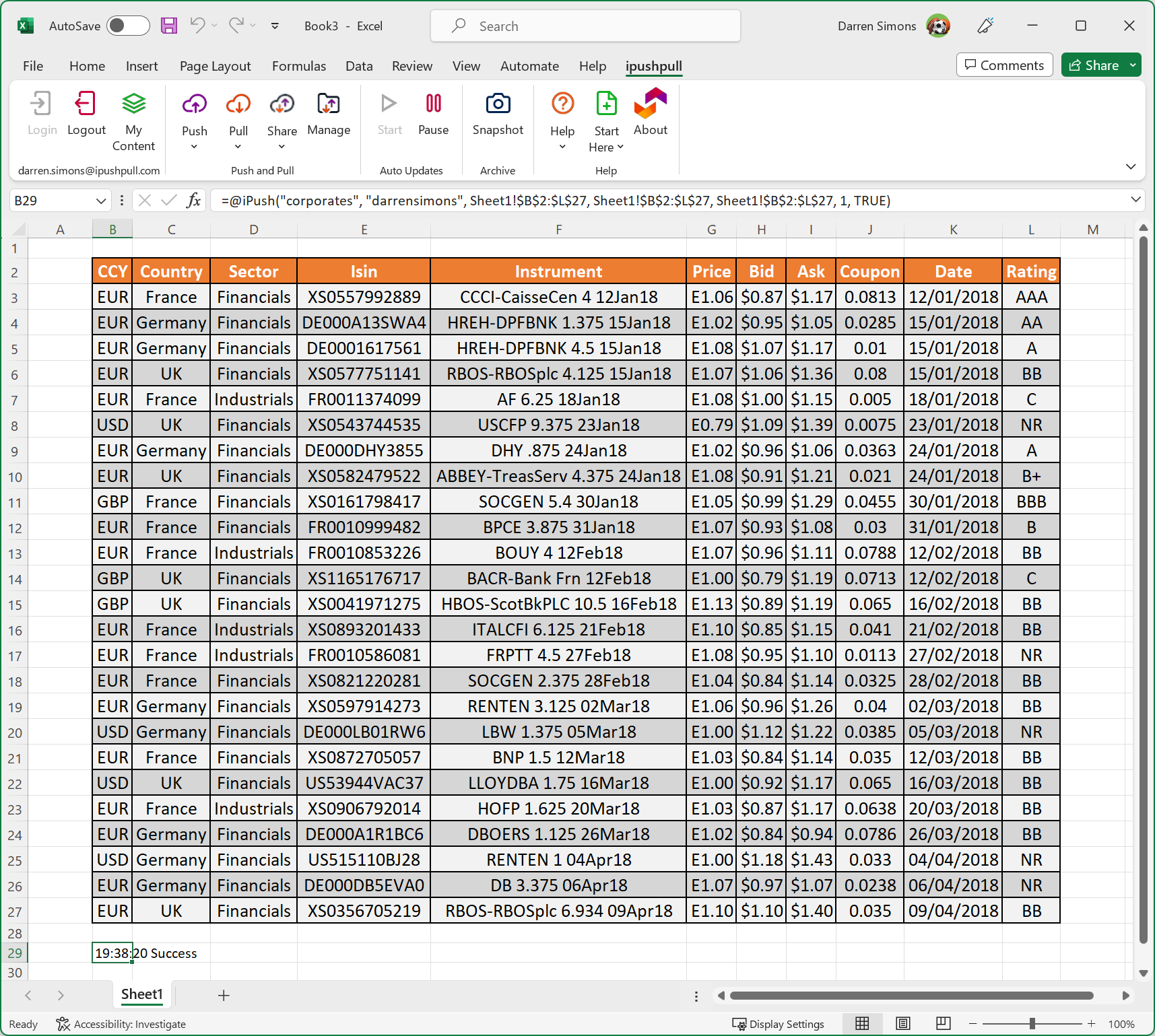.png)
In the last blog, we described some of the many ways of delivering real-time access to your data over different channels and applications, having assumed the source data had already been connected to your ipushpull service. In this blog, we will focus on how quick and easy it is to connect that source data to ipushpull.
Use cases for data services vary in terms of the size of the data set, update frequency and mode of access for end users. At one end of the spectrum are smaller fast-updating datasets often consumed via streaming apps or live notifications, while at the other end are larger data sets with periodic updates, accessed by on-demand snap-shot requests from end-user applications. Furthermore, data sets may need to be consolidated from various remote sources and transformed into a consumable format.
ipushpull provides several easy-to-configure tools to consolidate data sets from one or more data sources and connect live into the platform for different modes of access by client applications. Let's look at some examples of how different types of data sets can be connected to ipushpull.
Excel add-in
Generally used for smaller, often live-updating data sets
Starting with the simplest use case for smaller data sets, Excel is one of the easiest ways to push data into ipushpull. Using Excel's generic features to import and organise data into simple grids, the ipushpull Excel Add-in can then be configured to automatically push selected grids into ipushpull when the data updates. Excel formats and styles are passed to ipushpull along with the data itself, so the data in the client applications, such as the ipushpull web app or chat app, can be viewed exactly as displayed in Excel, and you can even push charts.

Real-world example: An individual broker consolidating interest in Excel and selectively sharing with clients and market makers over web apps and chat.
Data Loader
For smaller data sets, where the source is a database or files.
If source data is stored in a database or CSV file, ipushpull's Data Loader application provides the ability to automatically upload data to the platform from one or more sources. For databases, stored procedures can be configured within the Data Loader from very basic (selecting all rows from a table) to very complex (selecting filtered rows from a joined set of tables).

Real-world example: A reference data service pushing some specific live data (e.g. corporate actions) to the platform to provide clients with access via notifications or on-demand chat requests.
API
Programmable interface for more control and automation.
The ipushpull REST API is the most flexible way to connect data to the platform. The programmer is able to specify the data type, format, and styling for their data sets, and is able to choose when the data is updated. Being a REST API, it is platform-independent, and many clients use this via Python, C# and Java.
Real-world example: A back sales desk pushing current trade axes to ipushpull for live access by clients in Excel or on-demand chat requests.
Large data set (LDS) connector
Where the data service needs to offer clients omnichannel access to a large amount of data.
For bigger, largely static data sets which are simply too large to be updated frequently, ipushpull offers an alternative approach. The LDS connector is a fully configurable means to deliver very large data sets periodically (e.g. once per day) in various forms, including files or via API, and then to allow periodic interim updates to keep the data current. The data is organised and structured as always in the ipushpull platform and presented for omnichannel consumption by a choice of client applications and tools. Read this blog for more details.
Real-world example: A reference data service periodically pushes a full set of exchange-tradable instruments with occasional updates for new listings, to provide clients with access via on-demand chat requests.
Once your data is connected...
Having connected your source data to the platform by one of the above means, your data is then automatically structured and presented, according to easy-to-configure rules, in a consumable format for client access. For example, different layouts or Views of the data can be automatically generated for different subscription packages or client preferences. Once that is done, omnichannel data access is available to users, subject to their data access rights and user persona.
How does this help?
Data-driven services are looking to make data available over new channels of delivery. For this to be successful, it is imperative that data can easily be onboarded and potentially combined with other data sets to provide a complete data offering.
Why ipushpull?
Choosing ipushpull's omnichannel delivery reduces the risk of investing in the wrong delivery channels, as well as making it easy to rapidly grow across platforms without additional technology investment. Using ipushpull also ensures that valuable internal resources can be focused on the data itself, rather than on highly specialist integration work to provide access to the end user in their preferred format and applications.
To learn more about ipushpull's omnichannel chat solutions and other delivery channels like client APIS, Excel, and customer web apps, visit here.

-1.png?width=2000&name=Untitled%20(45)-1.png)
.png?width=1200&height=628&name=Blog%20header-1%20(27).png)


.png)
.png)
